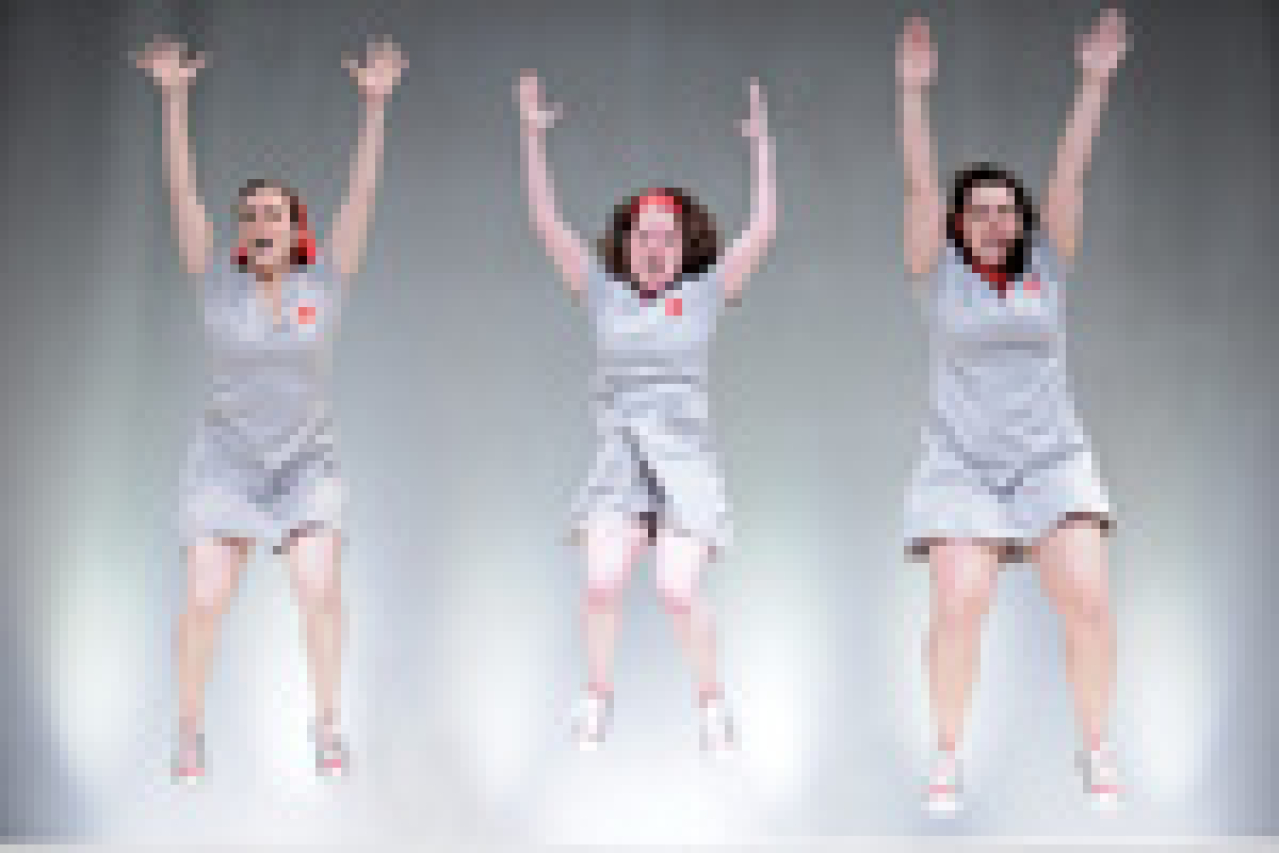Life and Times: Episodes 1-4

A woman with a full bird’s nest (eggs and all) wedged inside of her Red Queen hairdo and a man in a bright teal track suit with cowboy fringe, walked to the front of the theater. They announced that the performance (including meal breaks) was expected to run approximately 10.5 hours. I was officially on the Kingda Ka of theater, prepared to exit 10.5 hours later either vomiting or crying.
The eccentric characters (i.e. bird nest lady and glow-in-the-dark cowboy) are Kelly Copper and Pavol Liska, the long-married directors and creative minds behind the Soho Rep production of Life and Times: Episodes 1-4, now playing at the Public Theater until February 2 as part of its Under The Radar Festival. The concept behind Life and Times is this: A woman (whose name is not mentioned during the show but is explained in the program to be Kristin Worrall, one of the performers) chronologically recounted the story of her life during a series of phone conversations. These conversations were then transcribed and given a new life on stage, each one a separate “episode” that is staged in a unique way. These episodes can either be seen on three separate days, each performance running between 2-3 hours, or as one 10.5 hour marathon performance.
Nine featured performers (both men and women), joined by additional chorus members, perform this woman’s exact words, primarily in song form — to pleasant original melodies by Robert M. Johanson, Julie LaMendola, and Daniel Gower. And by exact words, I mean every “um,” “uh,” “like,” and “ya know,” which turn out to be the staples of her vocabulary. Not only is she shockingly inarticulate, but her life is so uneventful that you have to wonder how long it took Copper and Liska, to find someone so dull and yet willing to share her life story.
This all sounds terrible, but it is actually brilliant.
Liska manages to take this painfully boring and completely meaningless raw material and transform it into an incredibly intelligent, hilarious, and often poignant piece of theater. The performers sing the woman’s stories with hysterical conviction behind every stutter, grammatical error, and filler word. As we listen to her first “existential” moment as a child, the “uh”s form the choruses and the “like”s are drawn out for what seems like an eternity, exposing her complete lack of profundity and making us doubt that she even knows what the word “existential” means. It forces us to think that maybe our own life stories might not be as Pulitzer-worthy as we like to imagine. In fact, they might actually look more like this. Exact dates are never mentioned, and the woman’s age is only hinted at through musical references and her frequent use of the word “groovy,” so her story, whether we like it or not, becomes all of our stories.
Designed by Peter Nigrini, the bare bones sets are nice complements to each episode’s theme. A clean white stage in episode one accents the innocence of early childhood, while the disco ball and multi-colored Adidas track suits of episode two are nearly horrifying enough to capture the awkwardness of adolescence. A more traditional “set” only appears during the final two episodes, which are performed like an Agatha Christie murder mystery, highlighting the guilt, shame, and frequent confessions that come with being a teenager.
Though the words come from a single speaker (except for the handful of times we hear murmurings from the person on the other end of the phone), Copper and Liska create interesting moments for the performers to interact with one another. When there is a designated speaker (moreso a singer), the delivery often mimics the way someone would disclose a traumatic childhood story to a friend or therapist. These venting sessions are occasionally buttoned with one of the other performers comforting the “venter” with a sympathetic hug. During these prolonged rants, a group performs what looks like an interpretive dance on another part of the stage. This visual reinforcement of the words helps keep the audience consistently engaged in the performance for the entire marathon run.
The cast is also filled with strong performers who possess great comedic timing and admirable stamina. Anne Gridley in particular gave a standout performance, delivering the “first kiss” story, which turned out to be one of the only non-comedic monologues of the entire show. Though maintaining the same sarcastic speech patterns, Gridley was able to find heart-wrenching sincerity in the complete absence of eloquence.
Walking out of the theater at the end of the day, contrary to my expectations, I felt absolutely no urge to either vomit or cry—instead, I left the Public Theater with a nostalgia for elementary school play dates, a relief that I will never again have to find a date to my Junior Prom, and a resolve to ban the word “like” from my vocabulary.











